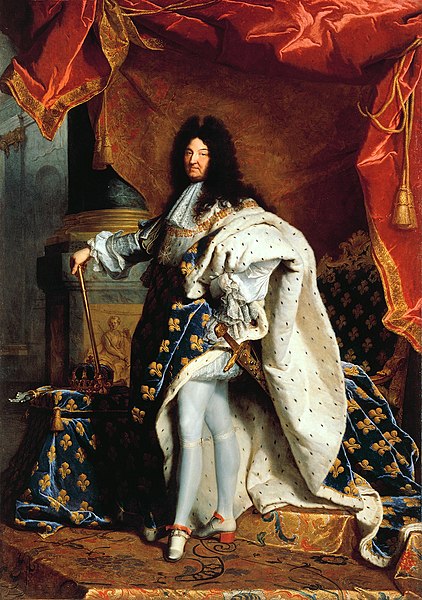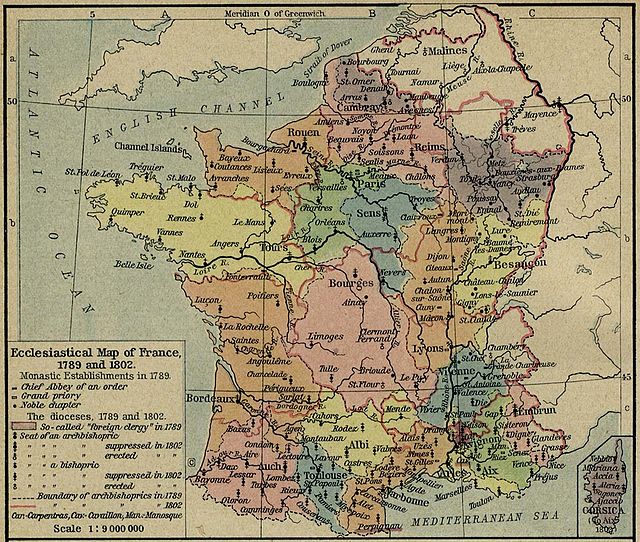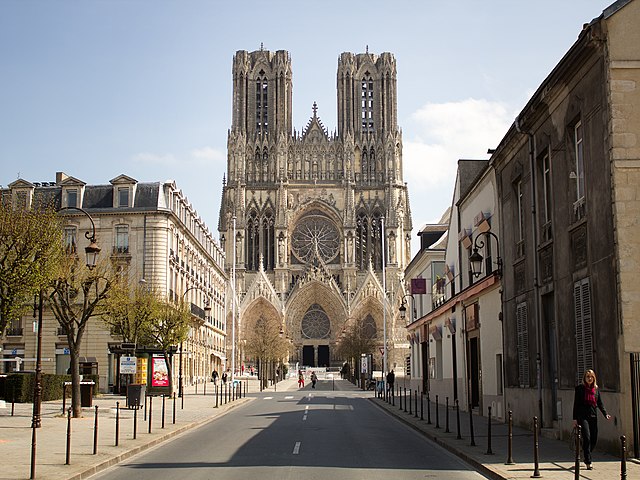The ancien régime, now a common metaphor for "a system or mode no longer prevailing", was the political and social system of the Kingdom of France that the French Revolution overturned through its abolition in 1790 of the feudal system of the French nobility and in 1792 through its execution of the king and declaration of a republic.
Louis XIV of France (the Sun King), under whose reign the ancien régime reached an absolutist form of government; portrait by Hyacinthe Rigaud, 1701
The Storming of the Bastille on 14 July 1789, later taken to mark the end of the ancien régime; watercolour by Jean-Pierre Houël
Dioceses of France in 1789.
A prerevolutionary cartoon showing the Third Estate carrying on his back the Second Estate (the nobility) and the First Estate (the clergy)
The Kingdom of France is the historiographical name or umbrella term given to various political entities of France in the medieval and early modern period. It was one of the most powerful states in Europe since the High Middle Ages. It was also an early colonial power, with colonies in Asia and Africa, and the largest being New France in North America centred around the Great Lakes.
Louis XIV, a 1701 portrait by Hyacinthe Rigaud
The provinces of the Kingdom of France in 1789
An 1841 portrait of Louis Philippe I by Franz Xaver Winterhalter
The Reims Cathedral, built where Clovis I was baptised by Remigius, functioned as the site for the coronations of the kings of France in the kingdom







